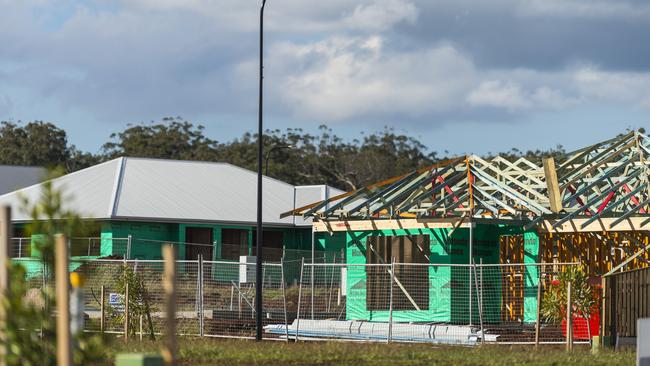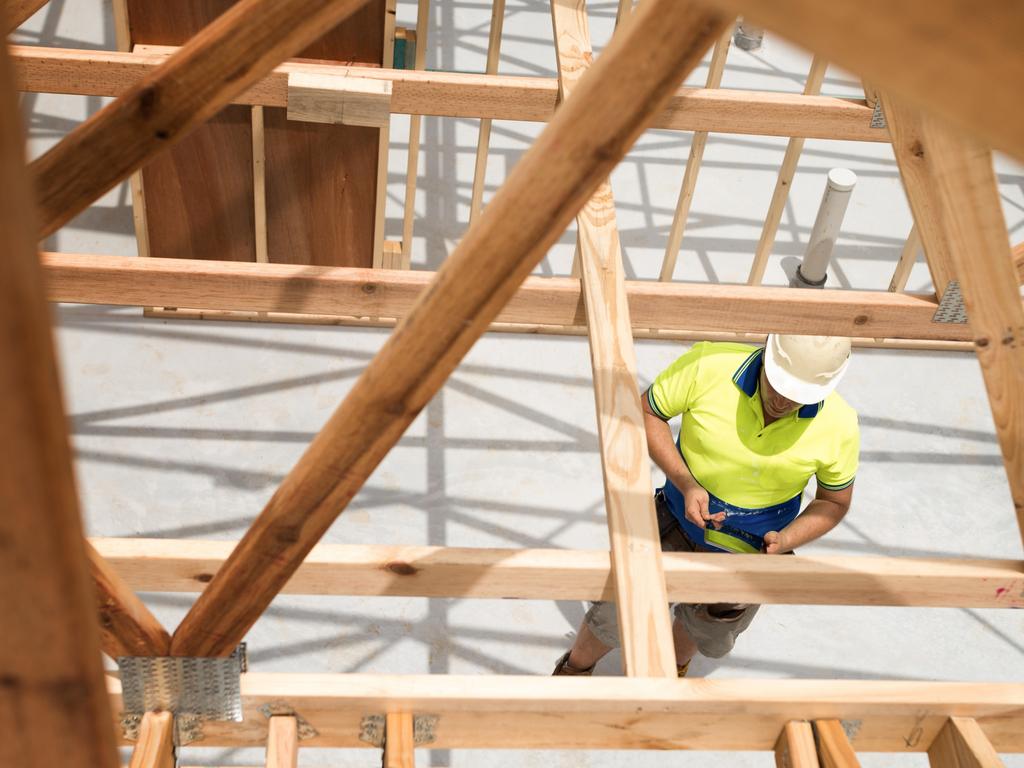Budget 2021: Housing market activity and price growth to slow
Bumper activity in the housing market and lofty price growth won’t be sustained, as brought forward demand peters out.

Bumper activity in the housing market and lofty price growth won’t be sustained, as brought forward demand peters out and the sector feels the impact of slower population growth.
That’s the federal government’s view – in Tuesday’s budget papers – of prospects for the nation’s hot residential market.
“The near-term outlook for housing activity has strengthened considerably, supported by an elevated pipeline of construction work and rising house prices,” the documents said.
“However, the policy-driven strength in demand for detached house construction partly reflects a bring-forward in demand from future years and activity is expected to moderate as the current pipeline of work is completed.
“As the outlook for elevated levels of detached house construction unwinds, slower population growth is also expected to limit demand for higher-density dwellings in coming years, such that the recent strength in housing market activity is not expected to be sustained.”
Economic indicators have underscored strong activity in the housing market, which has reignited talk that the banking regulator may have to step in later this year with measures to cool the sector.
Building approvals soared by 17 per cent in March to levels just shy of the all-time high in late 2017, triggering labour shortages in key trades and boosting demand for construction materials.
Speculators are also returning to the property market, as shown by a 13 per cent jump in new lending to investors in March, the sharpest increase in nearly 18 years.
The budget papers showed dwelling investment is forecast to grow by 2.5 per cent in 2020-21, given a “large pipeline” of work. That figure is expected to print at flat growth in the following financial year before falling by 1.5 per cent in 2022-23.
“It is not yet clear what structural changes will result from the pandemic, particularly given the greater propensity to work from home during the pandemic. Changing preferences for more outer-city, spacious and detached housing may also limit growth in apartment construction in coming years,” the documents said.
Government incentives for building new homes and conducting renovations have spurred a lot of activity, with about 120,000 people applying for the HomeBuilder grant.
Treasurer Josh Frydenberg used his budget speech to highlight measures taken to boost construction activity.
“When construction work began to dry up, HomeBuilder came to the rescue,” he said. “New house starts are now the highest in 20 years.
“New loans to first-home buyers reached their highest level in nearly 12 years … Our $2bn investment in affordable housing is bringing on more supply.”
The Reserve Bank’s latest Statement on Monetary Policy also delved into the property market, noting house prices in Sydney and Melbourne had exceeded their prior peaks recorded in 2017 and 2020 respectively.
The report also said while demand had been strong compared to the supply of housing available for sale, the dynamics were changing.
“New residential listings have normalised over recent months to be a little above their levels from the past few years. But the stock of total listings in each month has been low, indicating that properties are being sold quickly,” the RBA said.
In March, house prices posted the fastest monthly growth in more than 30 years. That moderated in April with national housing values rising 1.8 per cent for the month and 7.8 per cent for the year.
National Australia Bank’s base-case economic scenario anticipates 7.7 per cent house price growth this year, with that slowing to 6.5 per cent in 2022.
Commonwealth Bank expects 14 per cent total price growth for dwellings combined over 2021 and 2022.
Westpac has pencilled in 20 per cent house price growth by the end of next year, although most of the rise is front-ended in 2021.
ANZ is at the top end of estimates and expects house prices to surge 17 per cent this year.
The budget measures included the government outlaying $782.1 million over four years from 2021-22 to increase home ownership, buoy jobs in the residential construction sector and enhance housing data.
Among other initiatives, extra places are being made available under the New Home Guarantee, which facilitates first home buyers getting into the market with as little as a 5 per cent deposit.
The government is also increasing the amount that can be released under the First Home Super Saver Scheme to $50,000 from $30,000.






To join the conversation, please log in. Don't have an account? Register
Join the conversation, you are commenting as Logout